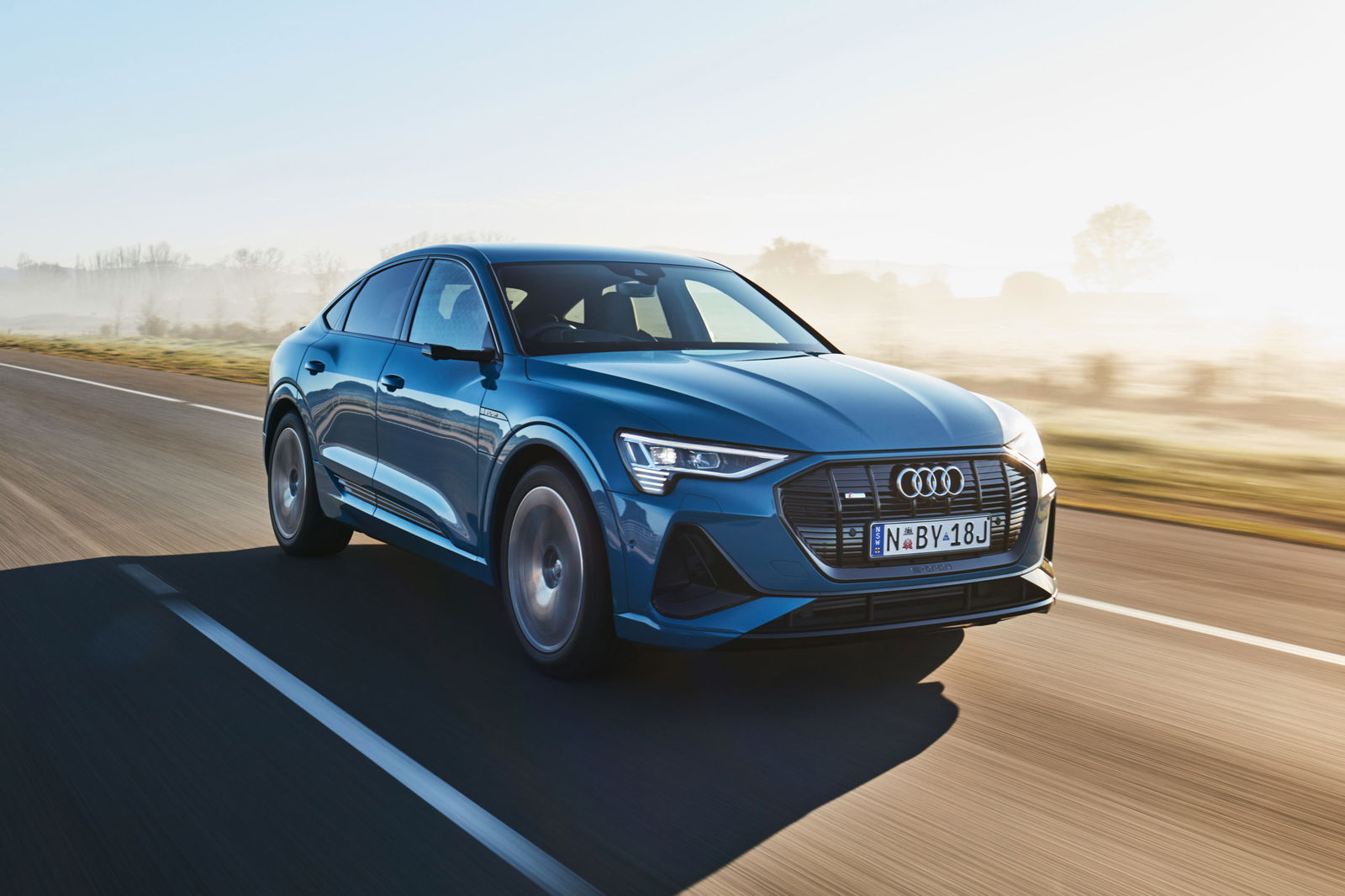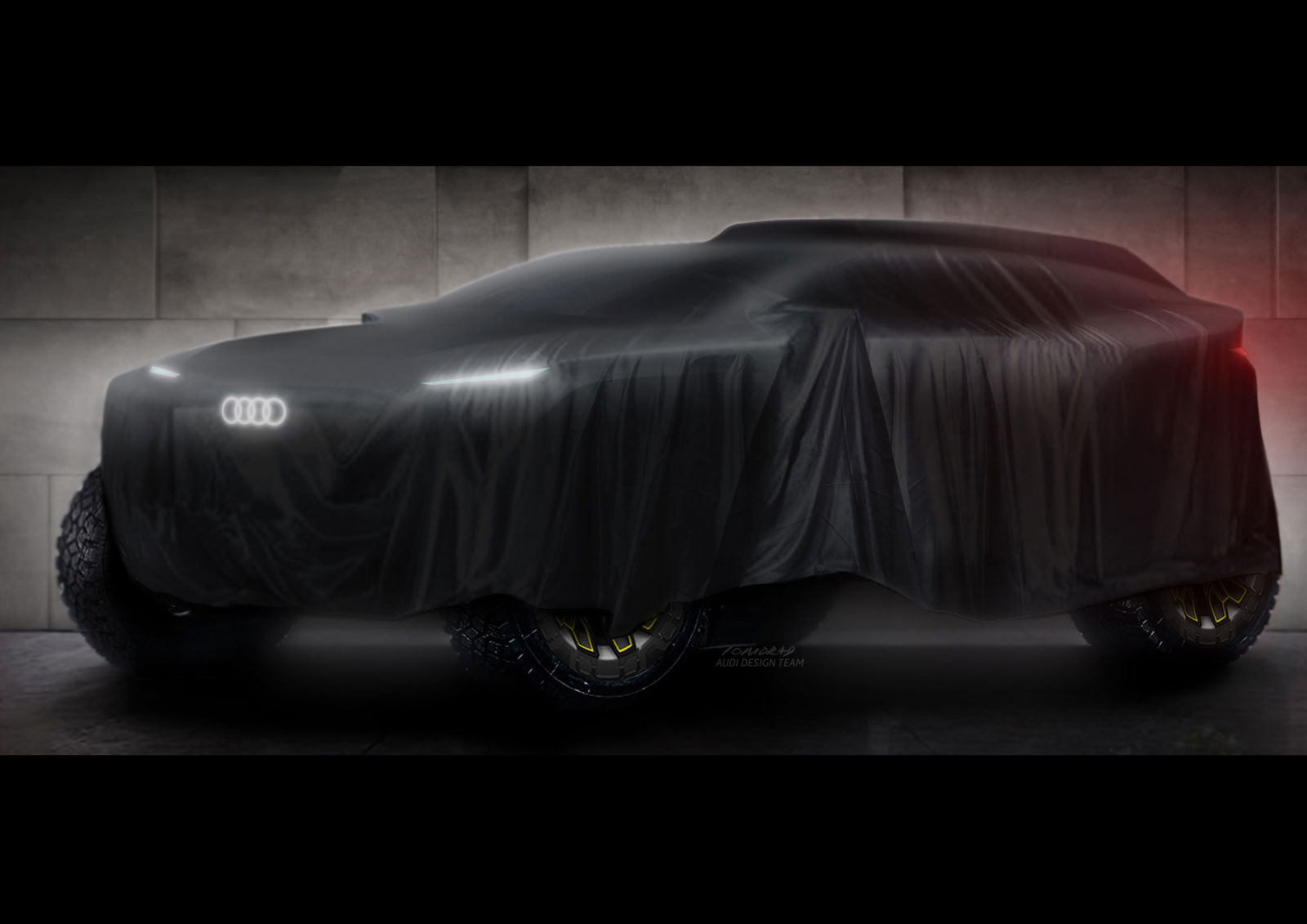
Audi’s decision to ditch its Formula E entry to take on the Dakar Rally with an electrified prototype seems like an unusual one at first glance. But, look a little deeper at the German brand’s electric aspirations over the next decade and the Dakar makes a lot of sense from a marketing and technology point-of-view.
But the real question is how? How is Audi going to tame the long, gruelling stages of the Dakar Rally with an electric vehicle?
The short answer is they won’t, not a pure EV anyway. The reality is Audi will use a hybrid powertrain, something the company admitted in the press release announcing its Dakar entry. It said it will build an “alternative drive concept” that “combines an electric drivetrain with a high-voltage battery and a highly efficient energy converter.”
While that’s as much as Audi is willing to give away at the moment, what we can expect is a plug-in hybrid powertrain (PHEV) that combines electric motors and battery pack with a petrol engine to act as an on-board generator. Several high-ranking Audi officials have hinted that the 2.0-litre turbocharged four-cylinder engine developed for the DTM is likely to be repurposed for the Dakar project as the range-extender powerplant.

There are two ways to build a PHEV – one where the engine only acts as a generator for the battery and the other which can use the engine to drive the wheels when needed. Which way Audi goes remains to be seen, but either way building a PHEV powertrain to take on the huge distances and rough terrain of Dakar will be boundary pushing. Either way, by combining the electric motor and batteries with the petrol engine, it allows the internal combustion engine to run at a steady revs – thus meaning it can run an its optimal performance and therfore be at its most fuel efficient.
In the same way Audi used Le Mans to learn about batteries and thermal management in a performance setting, Dakar’s relatively open rulebook will allow the company’s engineers to gain valuable information into batteries and motors in the most extreme conditions.
Why is this important to Audi? The simple reason is Audi is heading down an electric path for its showroom. The company is aiming to have nearly half of its fleet electrified by the middle of the decade, as Audi chairman and CEO, Markus Duesmann explained when announcing the Dakar project.

“And as early as 2025, around 40 percent of sales are expected to be achieved with purely-electric vehicles and plug-in hybrids,” Duesmann said. “This is why we are taking the next step in electrified motorsport by facing the most extreme conditions. The many technical freedoms offered by the Dakar Rally provide a perfect test laboratory for us in this respect.”
The obvious hope is that the Dakar prototype will help Audi both learn lessons for future production models whilst also demonstrating the reliability and range of PHEVs. This will help the brand overcome the biggest hurdle of EVs – range anxiety. By demonstrating that it can build a car capable of crossing the desert, Audi will be able to promote its EVs and PHEVs as capable of replacing traditional petrol- and diesel-powered models in performance, durability and range.
While the Dakar Rally is a new challenge for Audi, it fits perfectly with the brand’s creed ‘Vorsprung durch Technik’ – Advancement through Technology.
Audi will be hoping that advances made in the dunes of Dakar will improve technology we see in all future models wearing the four-ring badge.













Discussion about this post